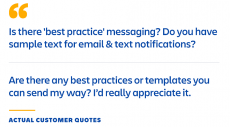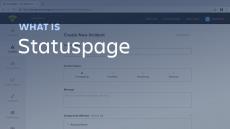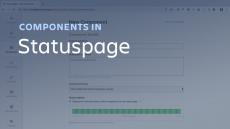|
By Sidharth Suri
Subscribe to Work Life Get stories about tech and teams in your inbox Subscribe When one of your IT services is on fire there’s no time to waste. Especially if that fire is blocking your users from getting stuff done. Rapid resolution tends to eclipse all else during an incident, often causing your team to ignore or forget pieces of the incident response process – like keeping people in the loop.
|
By Matt Ryall
Get stories from Work Life in your inbox Our mission is to unleash the potential of all teams by harnessing the power of collaboration tools and practices. This is particularly true for teams practicing DevOps, which is all about unlocking collaboration between development, IT operations, and business teams. However, this increased collaboration can come at a cost to developers.
|
By Blake Thorne
A lot of teams are asking us about how to do incident management when you’re suddenly remote. We understand. Going remote can be scary, and few things are scarier than having a service outage you aren’t prepared for. Nobody wants to be in a situation where an important service is going down and the engineer who can help isn’t answering on Slack. And if your company isn’t used to working remotely, it can be harder than ever to be on the same page during an incident.
|
By Chase Wilson
There are as many ways to trigger an incident as there are new code deployments across the globe and, with the emergence of cloud-reliant businesses, uptime accountability has shifted from on-premise server teams to the service providers themselves. SLAs, SLOs, and websites dedicated to downtime have suddenly come to life in the internet age, and having a status page is now an industry standard.
|
By Dave Parrish
Here at Statuspage, we take pride in helping you communicate proactively to customers during a service outage. We also believe that during moments of stress times, the tools you rely on should be simple, intuitive, and easy to use. Using simplicity as our guide, we’ve updated the design of the Statuspage management portal. We kept things organized much as before, keeping the focus on what’s most important – helping you create and update incident communications.
|
By Jake Bartlett
When things go wrong, your users need to know – but it’s not always easy to determine what to say or how to say it. If you’re responsible for getting the word out to hundreds or thousands of users, it can feel like a heavy weight on your shoulders. The task at hand is urgent, yet must be handled delicately. As someone who’s handled incident communication on Statuspage’s status page – the mother of all status pages – I know how difficult these moments are.
|
By Shannon Winter
At Hosted Graphite, our users rely on us for a heavy-duty component of their business: monitoring their stack. This is a responsibility we take very seriously and we realize how critical it is for a user to know right away whether the problem detected is related to their own systems or to our system. That’s why we choose to publish our internal system metrics to our public status page.
|
By Shannon Winter
Statuspage customers logged more than 194 years of collective incidents in 2018. That’s a whopping 87% increase from the 104 years logged in 2017, and we aren’t even through December yet.
|
By Shannon Winter
Downtime happens. That’s a fact, and it’s nearly impossible to predict. But there are some days when the chances of downtime are higher. Maybe it’s higher-than-normal website traffic, or increased app sign-ups. When planned high-traffic days are on the horizon, it’s a good idea to spend some extra time preparing for the worst.
|
By Atlassian
As Symantec’s Principal ITSM Solutions Engineer, I was tasked 2 years ago with finding a way to quickly and effectively communicate incidents with our customers after a 4-day outage left our customers in the dark. I found Statuspage and knew it was the right tool for the job, offering a single place to send real-time updates to our customers across various channels (email, SMS, Twitter, etc.)
|
By Atlassian
Statuspage is an easy way to inform users about outages, incidents, and scheduled maintenance.
|
By Atlassian
Components are the functioning pieces of your application or service that may experience downtime. Examples of components include, API, Mobile Application and Website.
|
By Atlassian
At eBay, we believe collaboration and communication are key to achieving our company goals. Come to this lightning talk to learn how we improved communication inside eBay using Statuspage as the main tool to announce maintenance and inform employees about incidents. This session will present Statuspage best practices to drastically reduce the amount of emails, Slack messages, and phone calls when things inevitably go wrong.
|
By Atlassian
Watch this video for a quick introduction to StatusPage, how it can help you communicate with your users during downtime, and learn how to get started.
|
By Atlassian
DigitalOcean is a cloud infrastructure provider with users and data centers around the world. The DigitalOcean customer support team works to ensure its community of users have the right information about service upgrades at all times. Learn how they manage downtime and incident communication with Statuspage.
|
By Atlassian
Dropbox is a cloud file hosting company with more than 500 million users. The Dropbox team puts a lot of work into making sure its services are up and available around the clock. At the same time, they recognize that occasional interruptions to service are inevitable and leaving users is not acceptable. The Dropbox team uses Statuspage to keep users informed about downtime and incident communication.
|
By Atlassian
Learn why Intercom chose StatusPage as their go-to status page solution and what features they love the most.
- May 2021 (1)
- June 2020 (1)
- March 2020 (1)
- December 2019 (1)
- October 2019 (1)
- August 2019 (1)
- March 2019 (2)
- February 2019 (1)
- December 2018 (1)
- November 2018 (1)
- October 2018 (2)
- September 2018 (1)
- August 2018 (4)
- July 2018 (1)
- June 2018 (5)
- May 2018 (3)
- April 2018 (3)
- March 2018 (4)
- February 2018 (3)
- January 2018 (1)
- December 2017 (1)
- November 2017 (1)
- October 2017 (1)
- August 2017 (1)
The #1 status and incident communication tool. Give your customers the insight they need by displaying the status of each core component of your service. Show your uptime track record by publishing key performance metrics like uptime and response time. Trust us, they'll love you for it.
Your way to turn a bad situation into a memorable customer experience:
- Cut support costs: Whether it's a server issue, bug in production, or DDoS attack, the simple truth is that downtime happens. Launch your status page to ditch the flood of support emails and let your team focus on fixing the problem at hand.
- Build customer trust: Customers value transparency. Allow them to opt into real-time incident and scheduled maintenance notifications via Email, SMS, or Webhook.
- Showcase reliability: Downtime communication is only part of the story when it comes to status pages. Tell the other 99.95% of your story with Uptime Showcase by surfacing your availability and reliability to prospective customers.
Downtime happens. Be prepared with Statuspage.


















